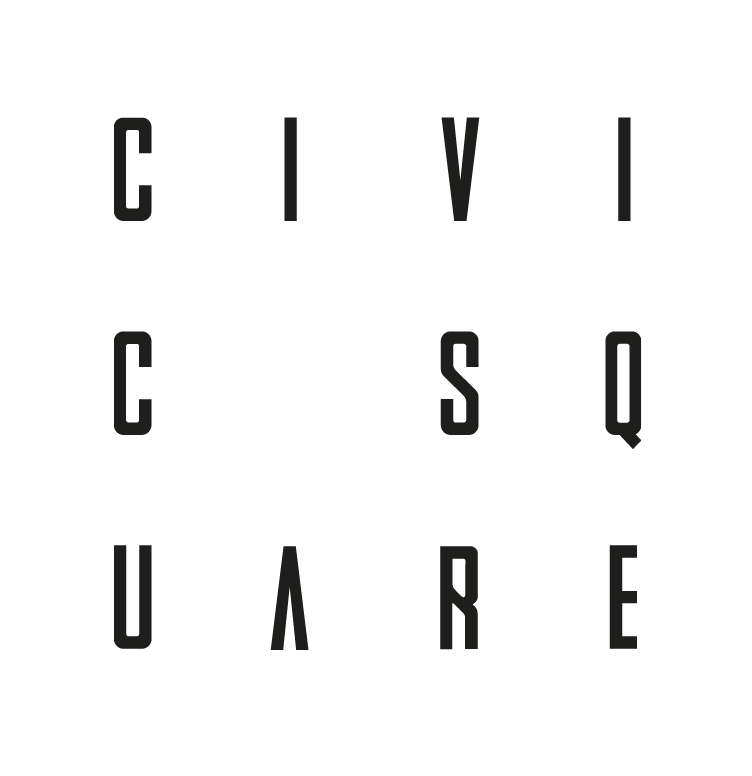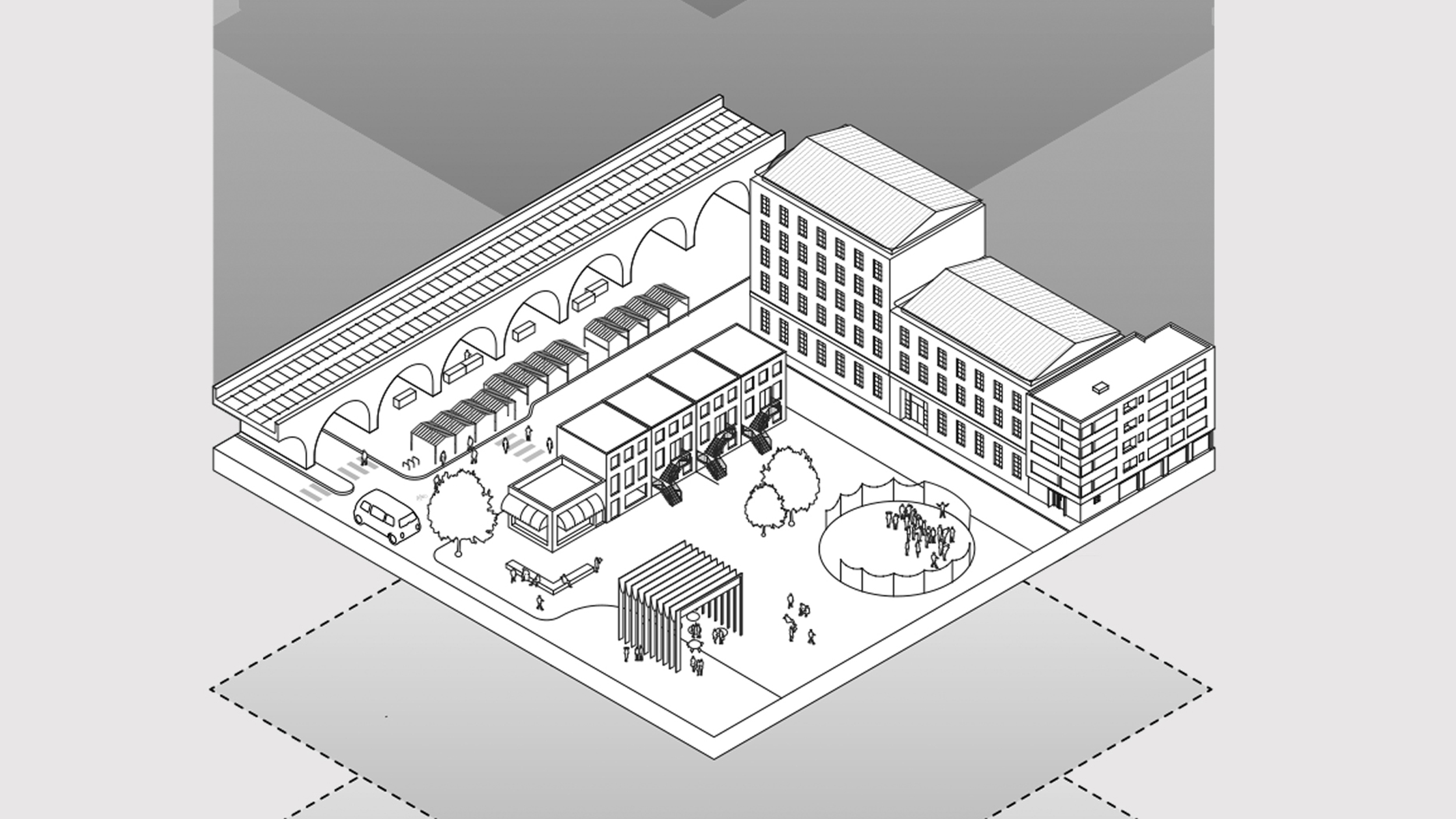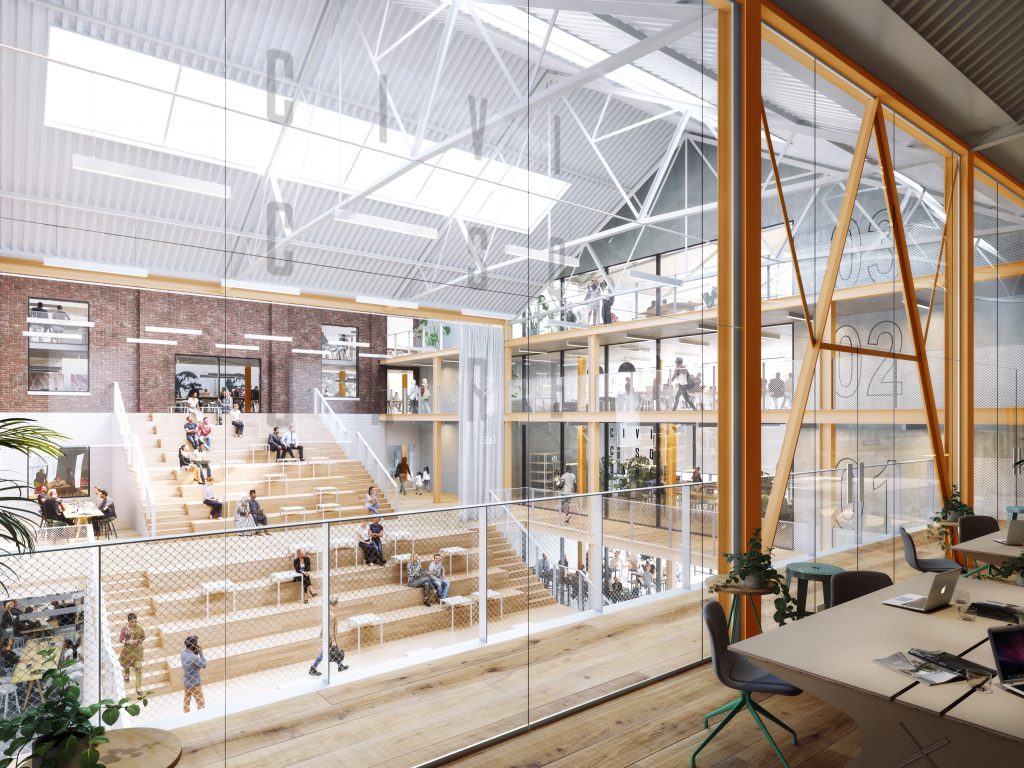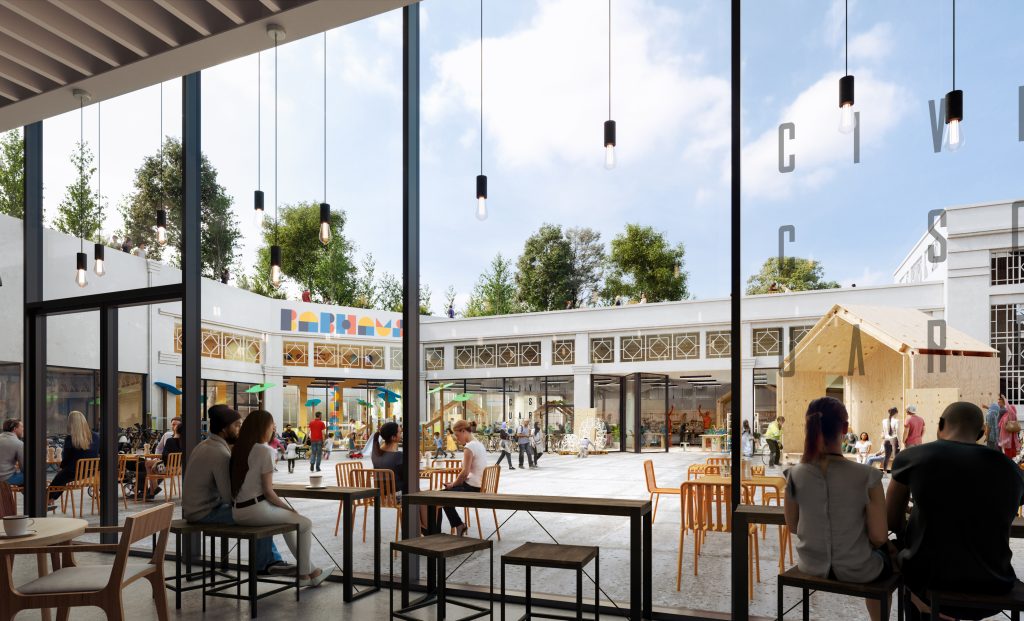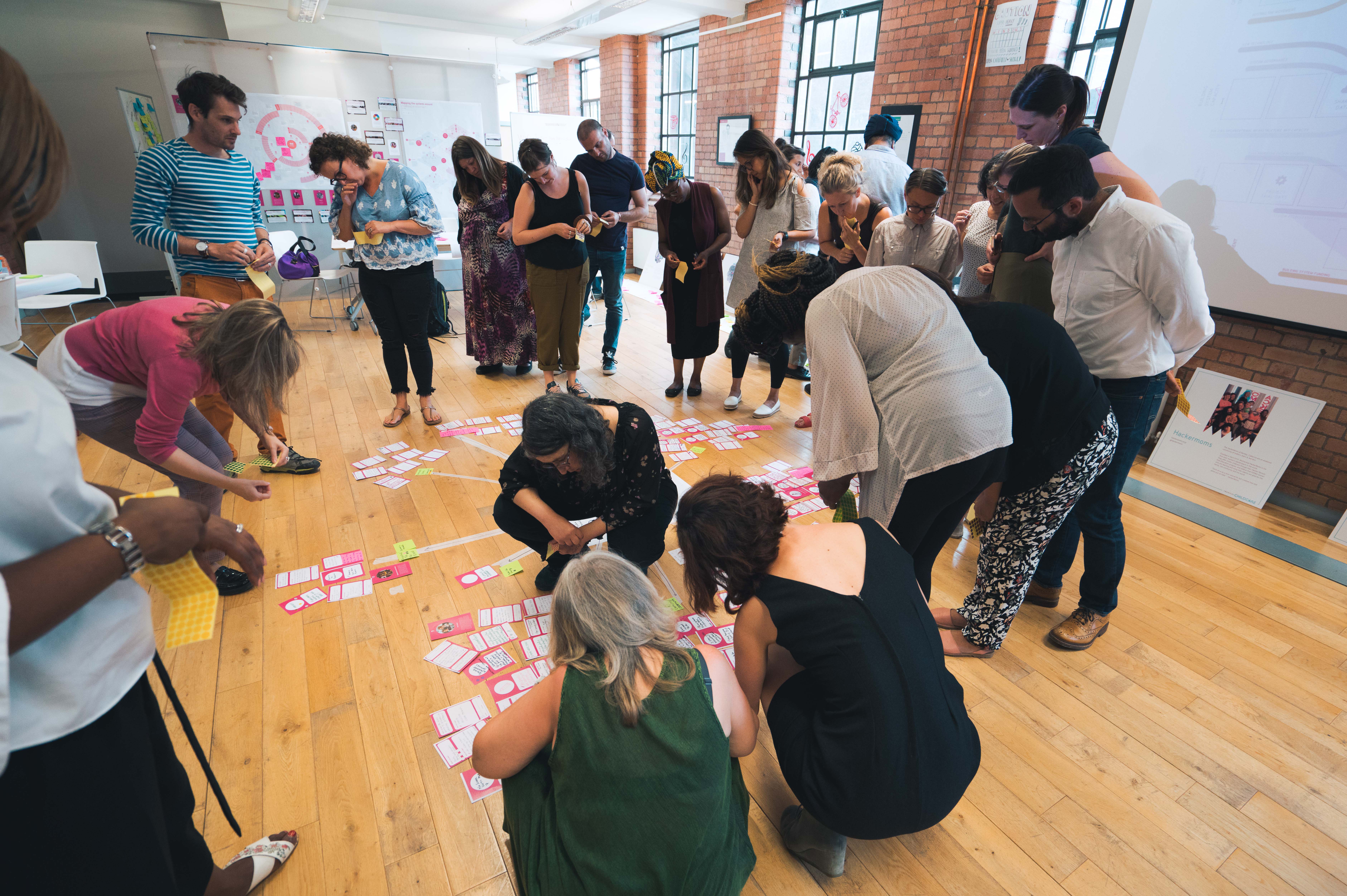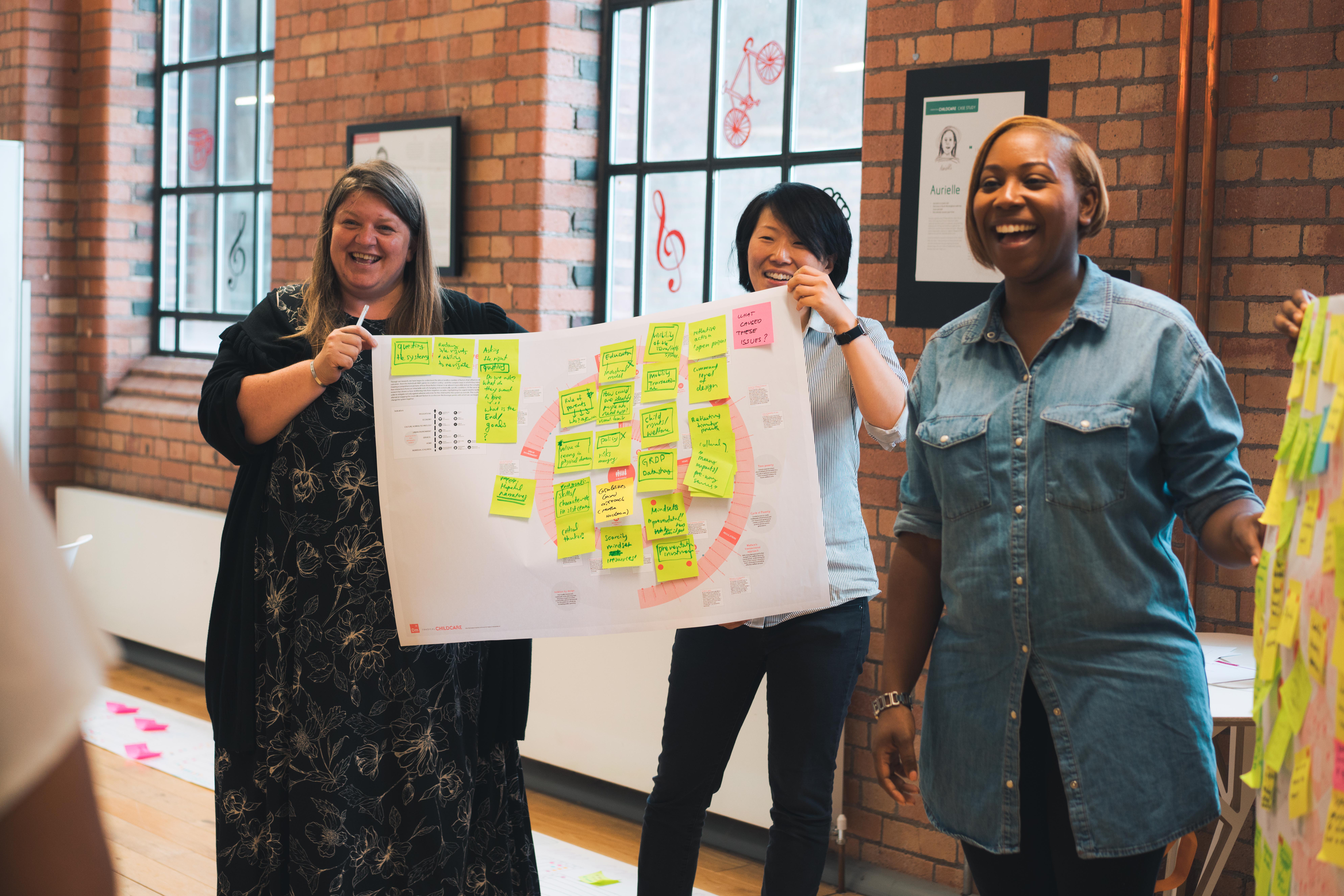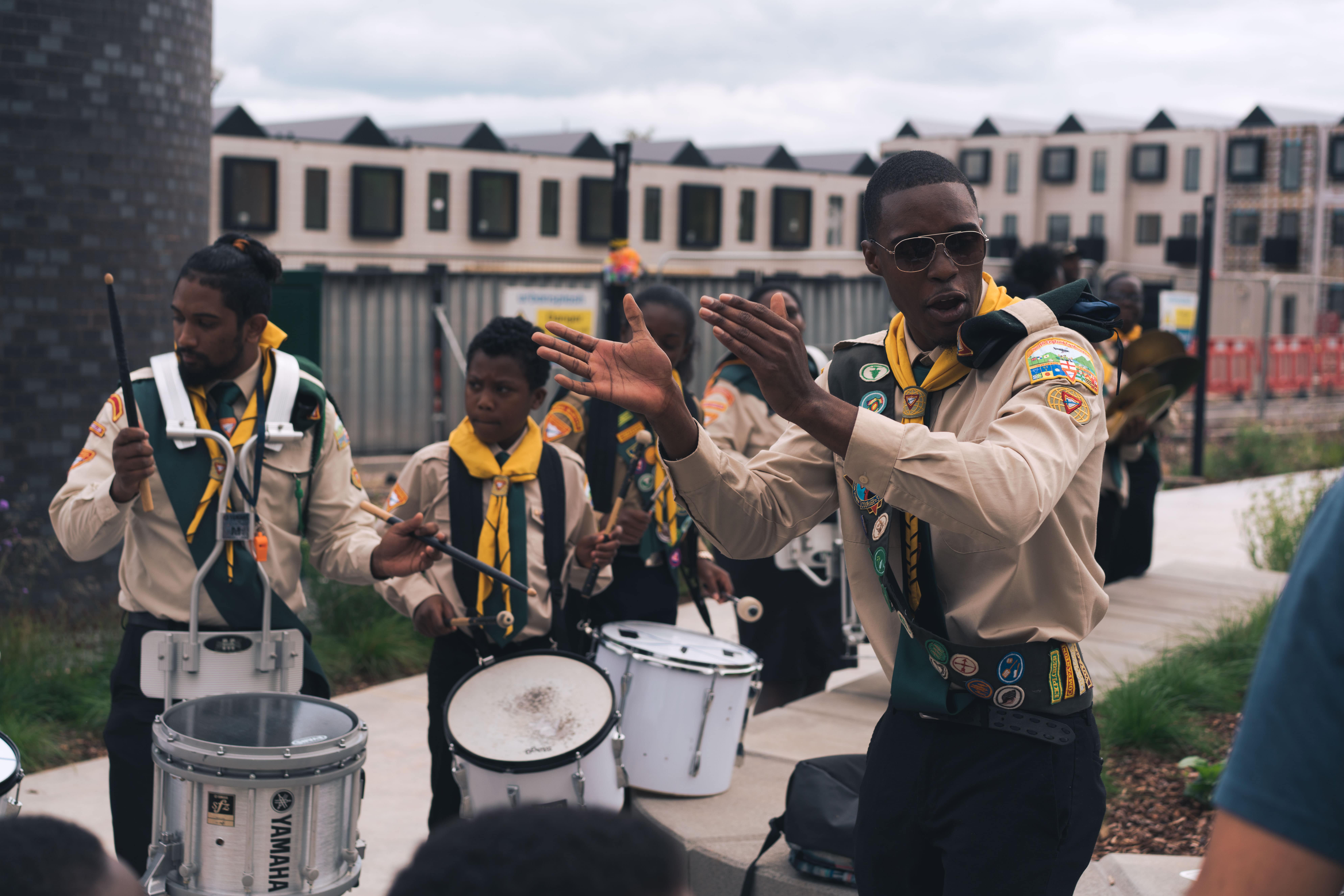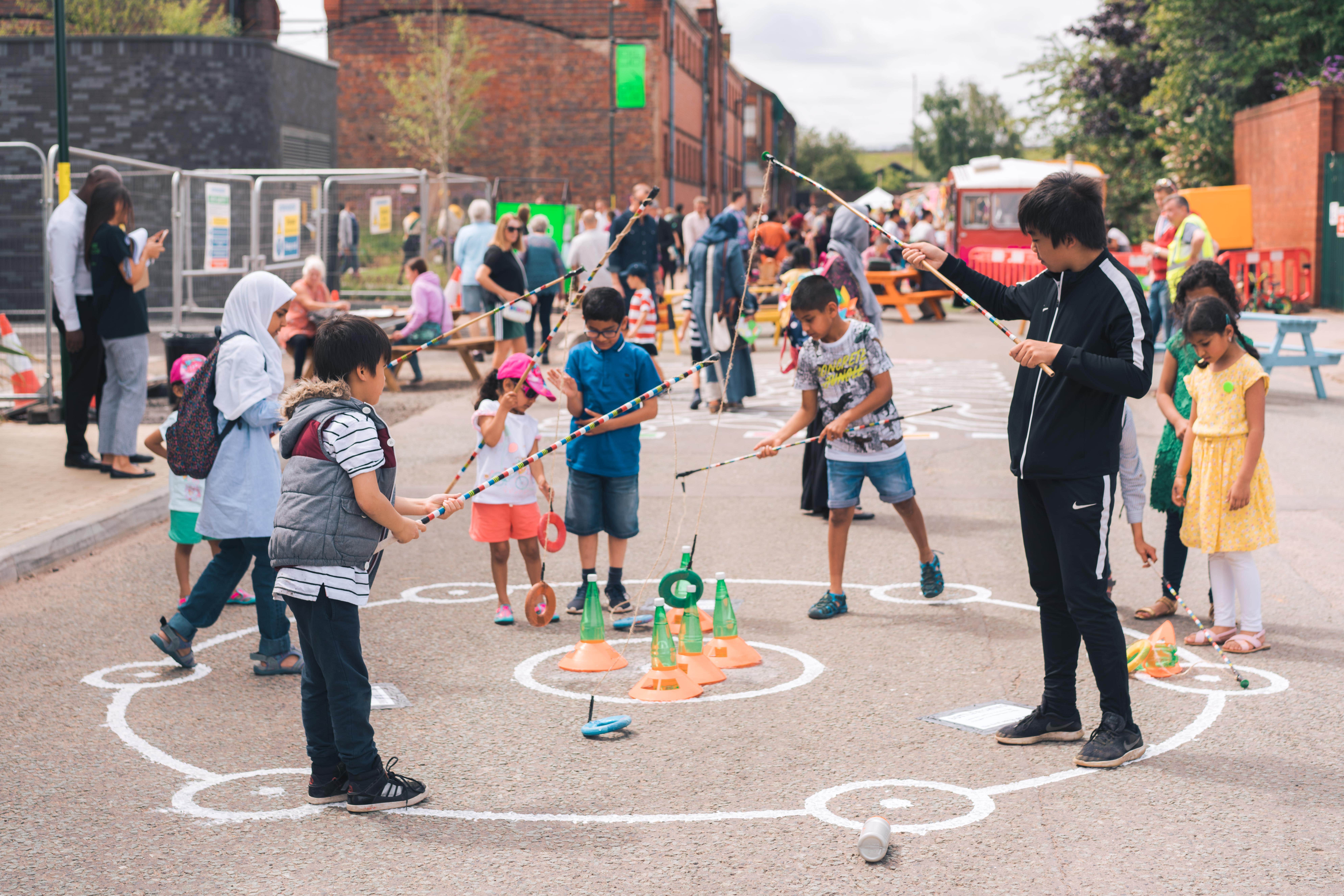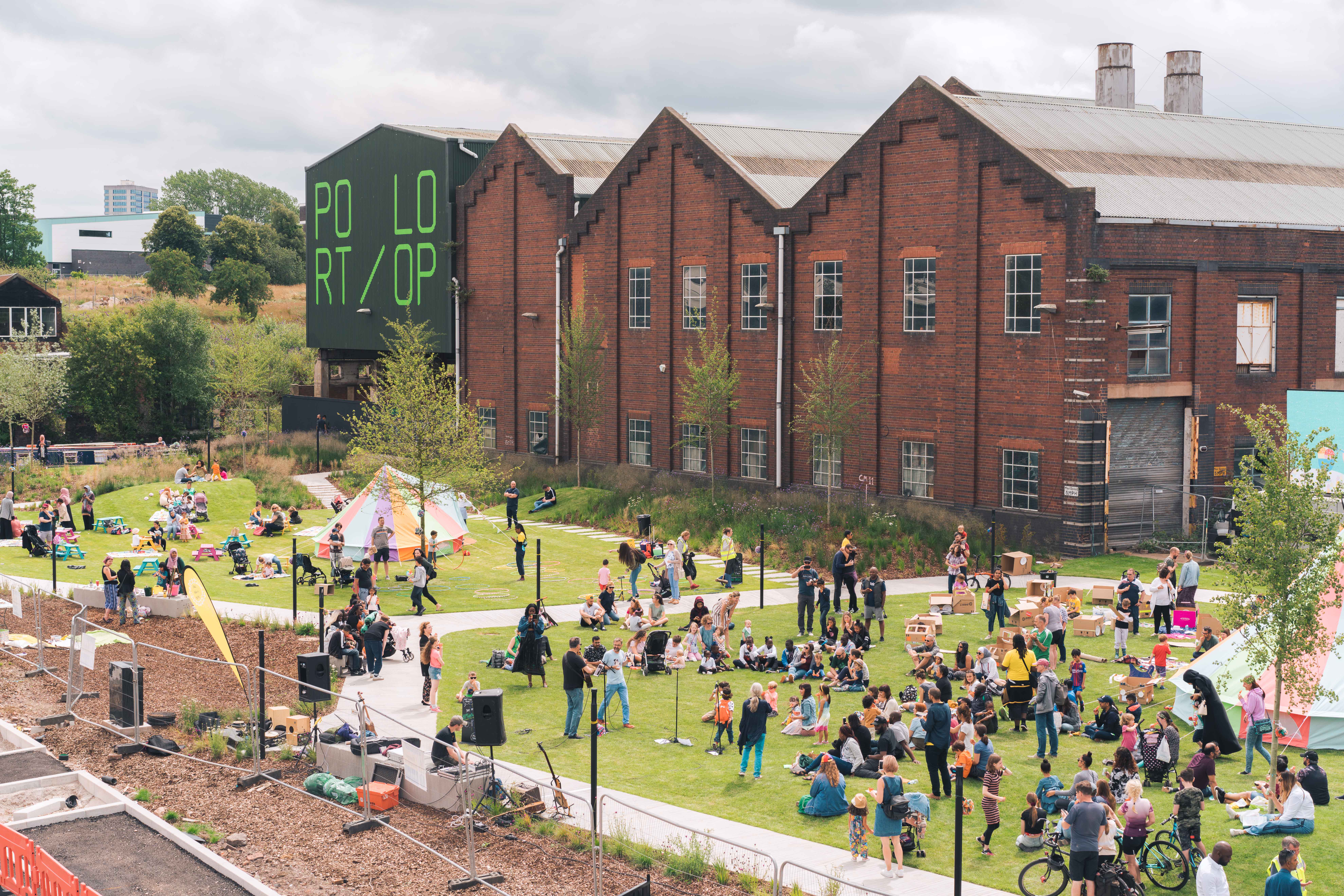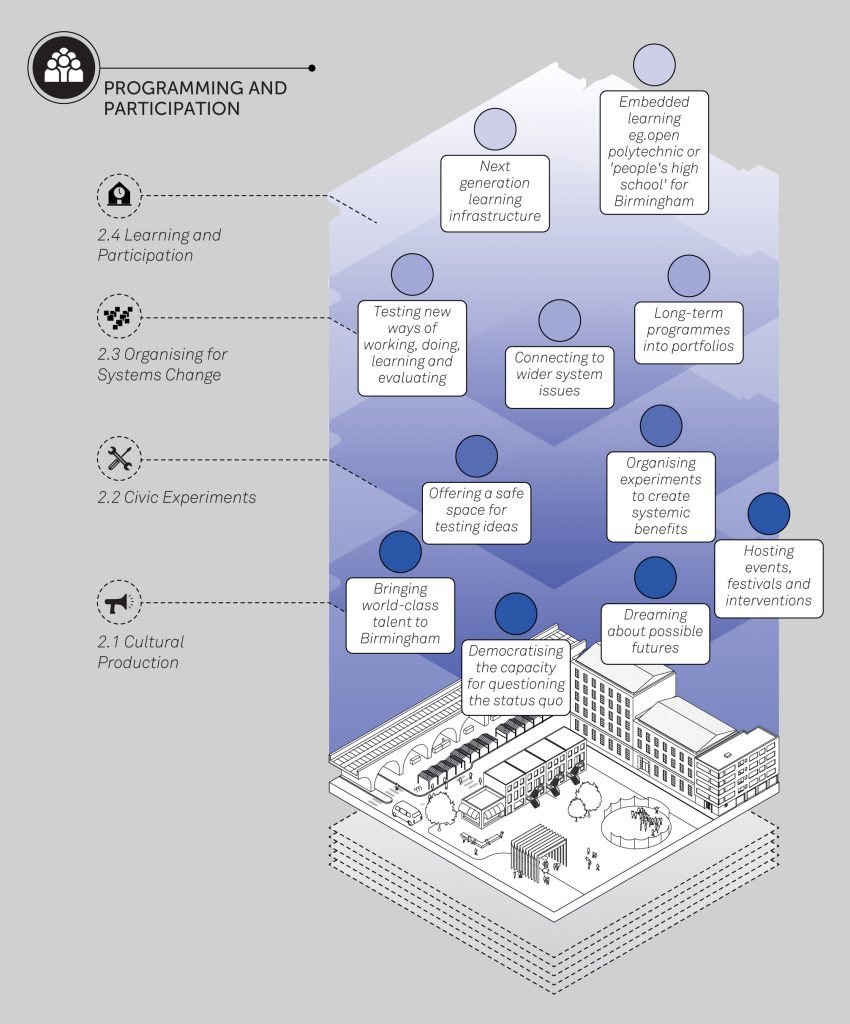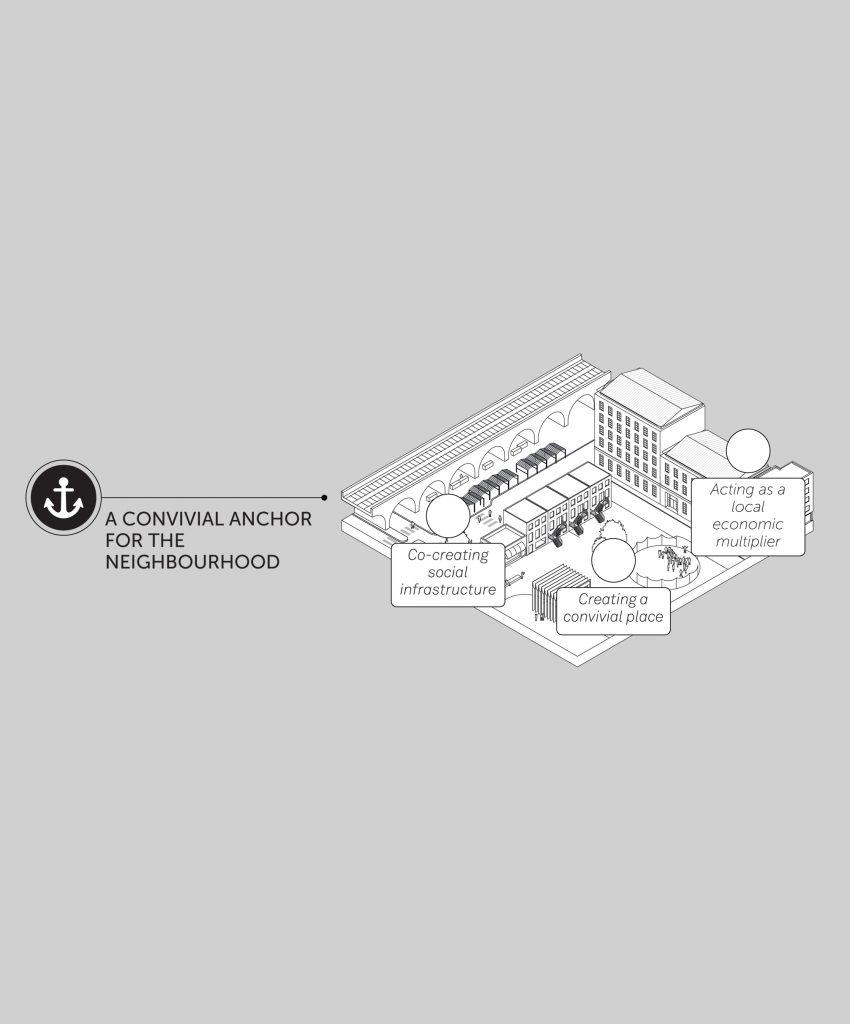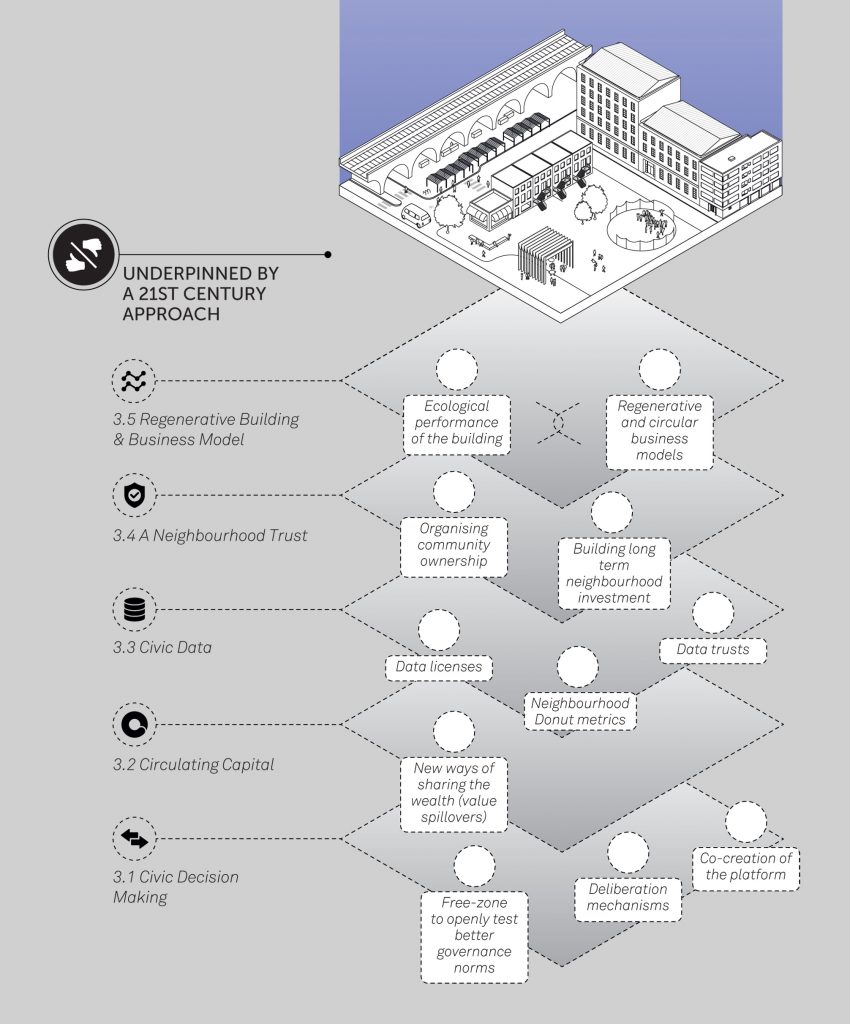“It could be that the neighbourhood, not the individual, is the essential unit of social change.
―David Brooks
If you’re trying to improve lives, maybe you have to think about changing many elements of a single neighbourhood, in a systematic way, at a steady pace.”
The deep, practical and experimental approach at Impact Hub Birmingham showed us that the reality of a lot of work needed to go further, taking urban experimentation and practice to a set of connected work across a wider system, at a scale that was both big enough to make tangible, long-term change, but small enough to create a tipping point, connecting our imaginaries of preferred futures to work in the here and now.
The local neighbourhood, and neighbourhoods that many of us grew up in, live in, and are proximate to our everyday experience make the change and work we are all fighting for deeper and connected to our collective purpose. In some ways the neighbourhood is the right size for communities to mobilise effectively, and connected enough for the broader implementation of policies that can be significant enough and spread. We know there are all sorts of complications and complexities in how we define and draw lines around our neighbourhoods such as borders, postcodes, wards, voting boundaries, and what defines what we see and understand our neighbourhood. There will be more on this thinking and fieldwork coming soon, embracing the plurality around what we mean by the word itself. However, we know and swathes of evidence point to the fact that empowered active and participatory neighbourhoods, devolved power and resources can boost levels of civic engagement and resilience, help rebuild legitimacy, trust, make bureaucracies more responsive and develop deep sources of social and civic value. When functioning poorly, they can also lead to mistrust, growing inequality, failing public services and conflict.
Whilst this has to be matched with national and regional resource, policy and vision, the neighbourhood is often the start of how we experience society. Neighbourhoods shape routine and quality of daily life in multiple ways. They are the place where you can bump into someone, connect, organise, celebrate and more. However it isn’t just about the day-to-day. In his recent book Palaces for People, Eric Klinenberg reiterates that outcomes and life expectancy can vary greatly depending on the services and social infrastructure you find in your community. Kilinenberg gives the example of a lethal heatwave that struck Chicago in 1995. He asked how two adjacent poor neighbourhoods on the South Side, demographically similar and presumably equally vulnerable, could fare so differently in the disaster. Elderly victims in the Englewood neighbourhood lost their lives at 10 times the rate of those in Aubern Gresham. The exploration goes deep into the differences in social capital, and the social infrastructure that enables social capital to flourish. In the neighbourhood with fewer fatalities, people checked in on one another, knew where to go for help. In the other social isolation was the norm, with residents more often left to fend for themselves. This relates to density of spaces, social infrastructure, shops and vacant units along streets, which either helped or hindered people in getting to know their neighbourhoods, and their neighbours. This has been further reiterated in Local Trust’s recent research, comparing outcomes in economically similar areas with large disparities in outcomes where this social fabric and civic life thrived, compared to where it didn’t.
“When hard infrastructure fails, it can be the softer, social infrastructure that determines our fate”.
―Eric Klinenberg
This isn’t just about buildings, but it is clear that convivial space as well as a range of other interconnected factors are not only a nice-to-have, but can be a case of life and death in times of crisis. Are our neighbourhoods resilient to the futures, opportunities and deep structural threats that are emerging? We believe the neighbourhood to be an exciting, legitimate, creative and tangible unit of change, if designed with intention, care, generosity and our future structural risks at the forefront of our minds and built upon the long history of neighbourhood level work in the UK. Most importantly, our work in the last few years in the area has shown an incredibly rich, deep, and hardworking network of organisations that we are excited to sit alongside and learn from. Here is some more information about the approach our work is set to take, from 2020 to 2030.
CIVIC SQUARE: Three Key Areas for the Next Decade
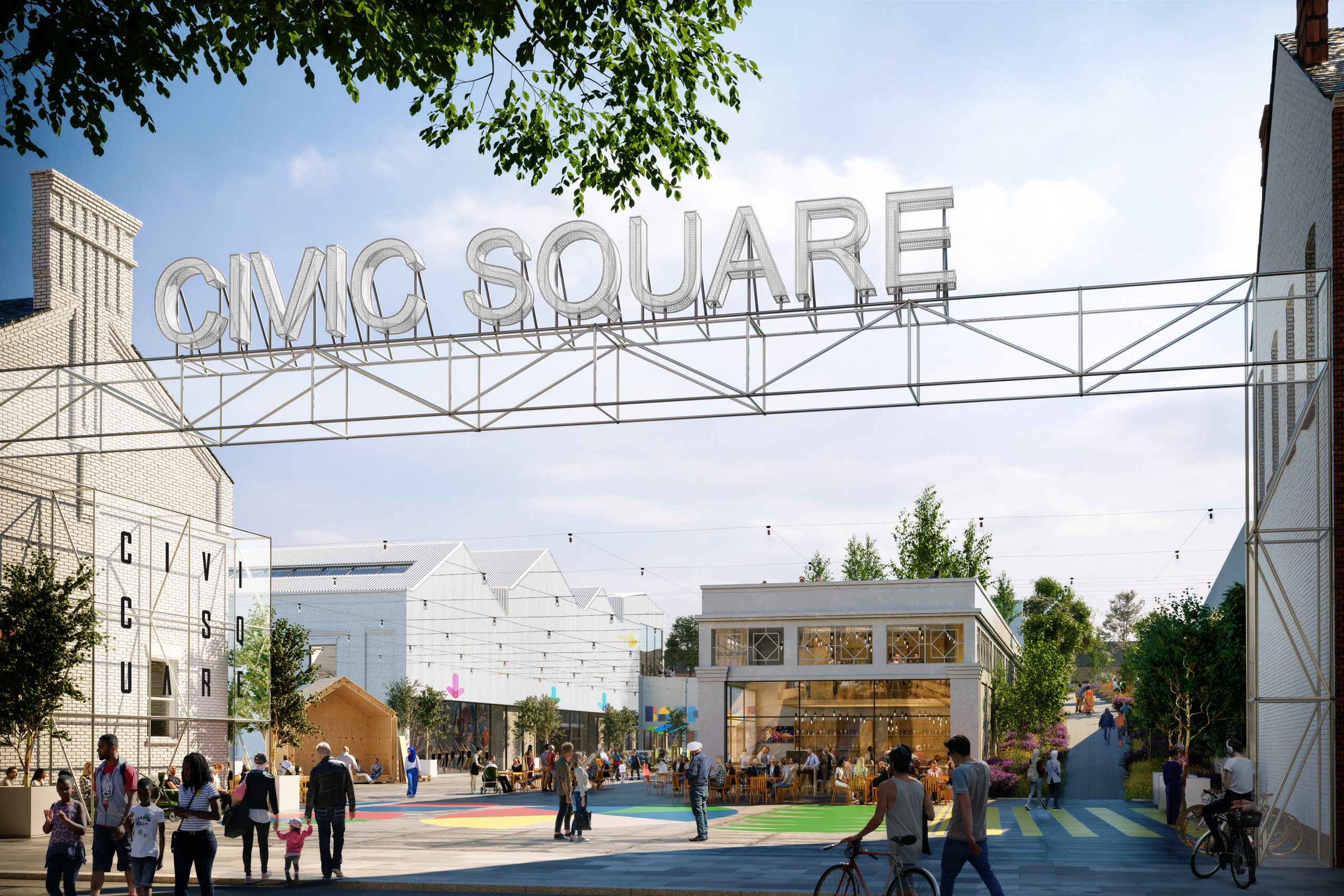
Please note: These are computer-generated designs approaches. They are for illustration purposes, are not final and remain very much subject to legals and planning.
1 /
Public Square
“Building places where all kinds of people can gather is the best way to repair the fractured societies we live in today.”
―Palaces for the People
With a wide range of partners we are working towards a bold vision to build a new public square, reviving and repurposing old industrial buildings to reimagine and collectively build a vibrant, well-resourced, 21st century place where communities gather.
CIVIC SQUARE will co-design and co-build spaces at the heart of the neighbourhood for meeting, connecting, creating, working, and dreaming together; to find support, give support, learn, grow, build and experiment. It will trade money, skills and time. It will be designed to be regenerative, flexible, adaptable, open and sustainable, acting as a local economic multiplier. It will co-create social infrastructure, and be home to practical resources and physical spaces for making, cooking, working, growing, and playing, with a purpose-built home developed by and for children and families, known as BABHaus.
Starting from a tiny pop-up floating on the canal in 2020, this is a long term vision with many parts and partners to bring together over the years ahead.
2 /
Neighbourhood Economics Lab
“We have 10 years to build regenerative economies that are sustained by resilient communities.”
―Janine Benyus
We know the instruments exist to decentralise the human and create regenerative, open, connected and thriving places, but it is paramount to acknowledge that these new mechanisms, no matter how sophisticated and powerful, only truly come alive and, perhaps more importantly, become legitimate, when woven into community priorities and their aspirations for the future.
CIVIC SQUARE will launch a new partnership with Dark Matter Laboratories and Doughnut Economics Action Lab, working together as a wider ecosystem to test and experiment with bold ideas in practice, co-build these ideas with local residents, create practical tools in a neighbourhood setting that can be spread and changed to context, building on local and indigenous expertise and connecting ambitious global thinking, wisdom and practice.
The Lab work will take the form of fieldwork, tools, research, events, workshops, civic experiments and activism; not dictating strict courses of action in hugely troubled and transitory times, but instead creating a set of interconnected frameworks and applying them in unique, creative and contextually-relevant ways that are openly available to be adapted, improved, pulled apart, reapplied, and spread quickly, working in a constant state of beta.
The Lab’s key areas of enquiry will be:
1. Buildings and Business Models — climate resilient design, indigenous design, regenerative architecture and business models
2. Designed to Spread and Tools to Act — openly sharing frameworks, processes, learnings and experimentations
3. Construct of Land — interrogating and unpacking the construct of land, unlocking under-utilised land for community housing, play and growing
4. Circulating Capital — Neighbourhood Trusts, shared ownership and distributing value
5. Department of Dreams — boldly and creatively imagining regenerative futures
We will be starting to share articles around the beginnings of this ongoing exploration medium.com/@civicsquare. We are also preparing to launch the upcoming community housing project, along with the philosophy and wider vision for BABHaus which will boldly imagine radical childhoods through learning, art and play.
3/
Creative + Participatory Ecosystem
“For the silent leaders behind every victory who ‘strain in the mud and the muck to move things forward, who do what has to be done, again and again’ (Marge Piercy).”
―Andrew Boyd, Beautiful Trouble
Alongside many long-standing, recent and future partners we will grow a platform that creates ever-changing entry points for bridging across people’s everyday experiences and imaginations, their inspirations and what captivates them, democratising our collective capacity to dream as we work together over the long term to create the future.
Over the last few years we’ve been meeting an incredible network of residents, citizens and organisations who work in the area, such as Liz Pemberton, Craig Pinkney, Eat Make Play, Edgbaston Reservoir Consortium, USE-IT, DIME Studios, The Real Junk Food Project, Places of Welcome and many many others, doing amazing, urgent and important work, and we are thrilled to build alongside and learn from the movements they have grown locally, and support through being both bold and useful, particularly given the new COVID-19 realities we all face.
This will take the form of collectively mapping, learning together, platforming and surfacing local creatives whilst attracting global talents and ideas to build our collective capacity for questioning the status quo, dreaming together to design neighbourhood futures and community organising around social issues, working alongside a bustling area of Birmingham that is making the everyday activities of neighbourhood life extraordinary together, amongst the many paradoxes and pluralities that exist.
We’ve been working behind the scenes on this for many years, and can’t wait to share the thinking, our updated Theory of Change and begin to build with you all. We will soon be activating our Medium to go into further detail, share amazing examples, thinking and learning as we develop, experiment and begin to activate this work in the open.
As we look out across at least a decade’s worth of bold work, the first phase of CIVIC SQUARE will be a point of hosted welcome to design and grow this ambitious project together, known as The Front Room. You can now find us right at the beginning of the journey at The Floating Front Room at Port Loop, bringing together and developing the first tangible versions of these areas of work. This is undoubtably just the start of a long, exciting, but complex journey ahead, that we hope to grow, build and steward in a considered way with the care, but also with ambition and the urgency that is required.
A collation of our previously-shared principles and simplified key areas can be found on the About page.
